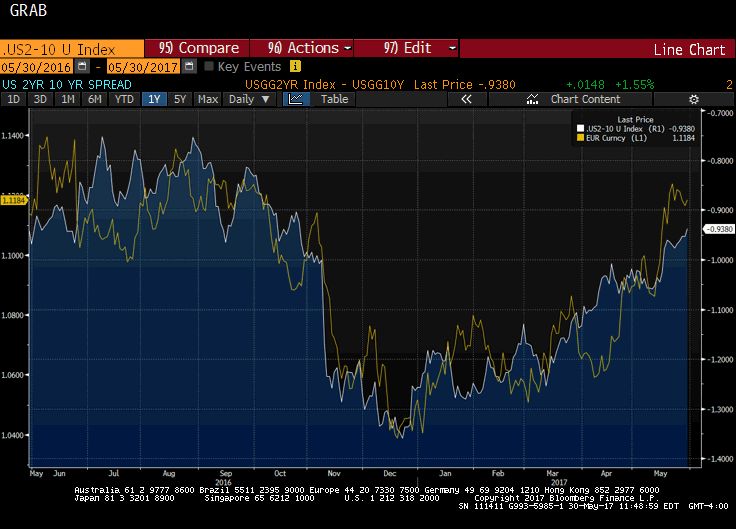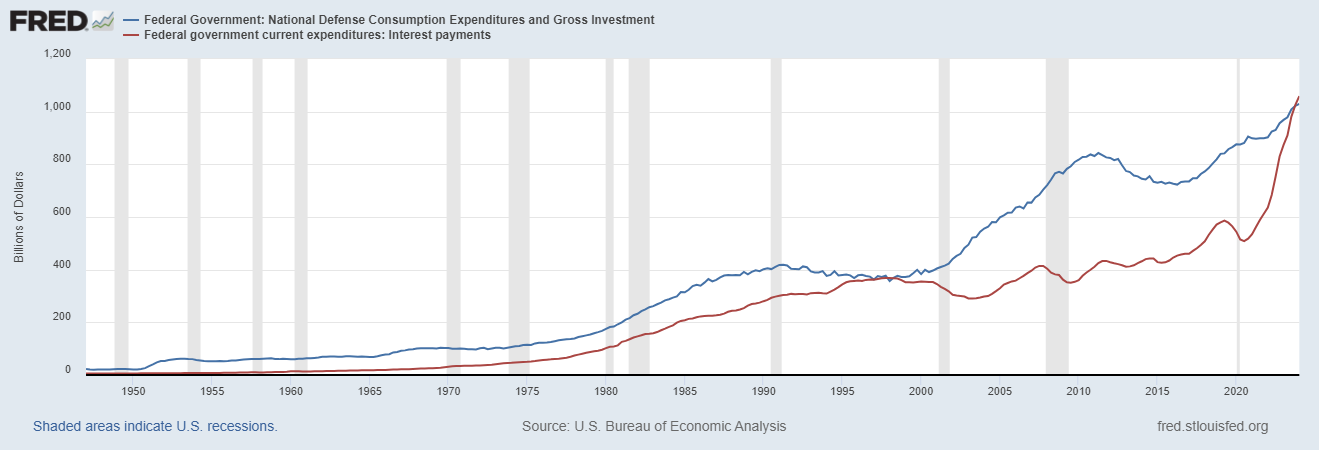| This Great Graphic was created on Bloomberg. It shows two times series. The yellow line and the left-hand scale show the euro’s exchange rate against the dollar for the past year. The white line depicts the spread between the US two-year and 10-year yield.
I show the curve this way to be more intuitive with the euro rather than the 10-2 yr curve. To be clear as the curve has flattened the white line rises. Despite me antipathy of putting two-time series with two scales on the same chart, it is the only way that this data can be meaningfully displayed. The US yield curve has flattened consistently since the start of the year. When the Fed hiked last December, the difference between the two-year yield and the 10-year yield was around 135 bp. It has flattened to about 94 bp now, which is the flattest since last October. The two-year yield is anchored to some extent by the Fed’s control over overnight money (Fed funds). Consider that the Fed has hiked rates twice over the past 12 months, and another hike in a couple of weeks seems very likely, and yet the two-year yield has risen about 38 bp during this time. The US 10-year yield is considerably less tied to the overnight rate. Over the past six months, as the two-year yield has risen 17 bp, the 10-year yield has fallen 15 bp. Over the past few months, the US-German 10-year yield differential has become better correlated with the euro-dollar exchange rate than the two-year differential. We run the correlations on the basis of percentage change of each time series on a 60-day rolling basis. The correlation of the 10-year spread and the euro-dollar exchange rate is near 0.68. It is the strongest correlation since at least 2000. It finished last year near 0.50. The correlation with the two-year yield remains near historic extremes. For the past 60-days, the correlation is near 0.58. It briefly was 0.65 in late-February/early March. In late 2015, the correlation was near 0.70. It finished last year around 0.57. The US yield curve is unchanged over the past year, while it is flattened about 32 bp over the past six months and 19 bp over the past three months. In contrast, the German curve has steepened by 32 bp over the past year and is flat over the past six months. It has flattened by 27 bp over the past three months (two-year yield is up 19 bp, and the 10-year yield increased eight bp). Over the past month, the German curve has flattened by four bp). |
Euro's Exchange Rate Against The Dollar And U.S. 10 Year and 2 Year Yield Spread Compared, May 2017 |
Tags: $EUR,Correlations,exchange rate,Great Graphic,Interest rates,newslettersent,Yield Curve








































